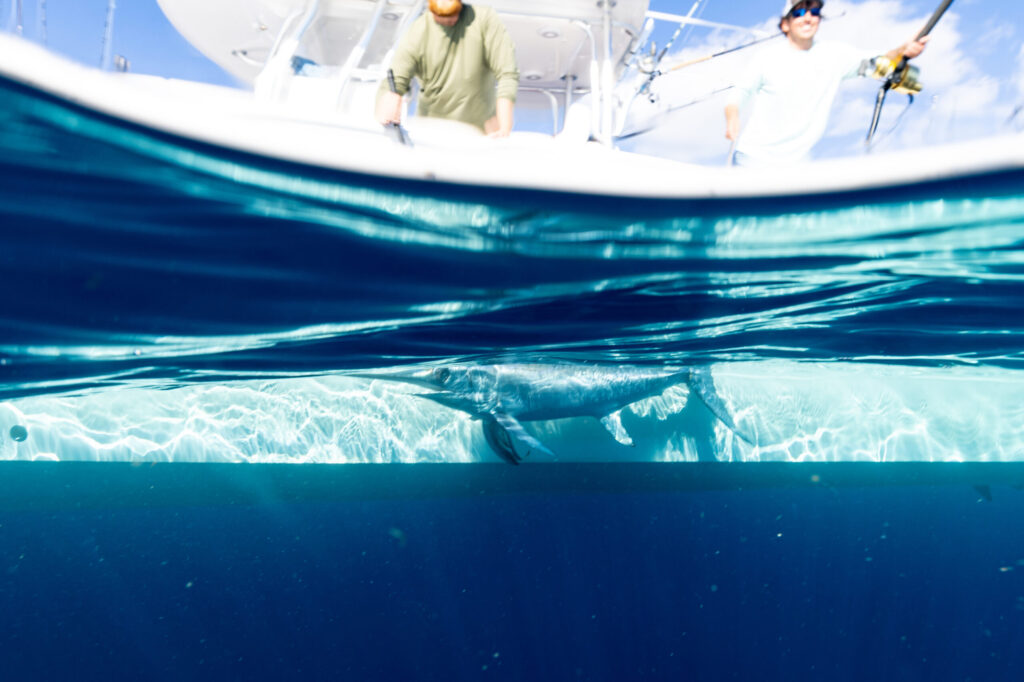🍽️ Ready for a Clean Eating Reset?
Grab your 14-Day Meal Plan eBook now and start your healthy journey today!
Download for $9.99Story by Daniel Schumacher | Recipe Photography by Sam Hanna | Recipes by Chef Michael Nelson
In terms of raw coastline, the Bayou State ranks third in the country with 7,700 miles of coastline along the Gulf, according to the National Oceanic and Atmospheric Administration. Along those inland waters and then out into the depths, commercial and recreational fishermen spend their days in search of the delicious morsels swimming and scuttling below. For chartered voyages, the next step for those fish is often a quick dockside filleting, and the party heads home, often with a hefty load headed for a chest freezer. In the best cases, those fillets are enjoyed with family and friends, but as Chef Michael Nelson of GW Fins in New Orleans’ French Quarter puts it, by the time folks get around to cooking their catch, “they’re not really looking forward to eating it anymore.”
To help ensure a more just and delicious end for these catches of the day, Michael and a handful of other chefs around Louisiana participate in the state’s Catch and Cook program. This allows permitted restaurants and charters to cook and serve folks’ catches to them in a restaurant environment. For Michael, the diners who participate in Catch and Cook, which varies seasonally but ends up bringing in as many as a dozen tables a week, give him a chance to “kind of tie [the whole experience] together and add in the ability to enjoy all of that amazing fish you just caught in a setting, where, honestly, you don’t have to do anything, and that always makes things taste better.”

But even if you don’t choose to have your catch of the day prepared by a renowned professional team, Michael is keen to offer insights on how to make the most out of your catch. For him, the fillet is the low-hanging fruit. Fillets are the default cut from most fish and often the only piece that makes it to the plate. The rest of the fish is typically wasted, and to him, that is a great shame since the fish has so much more to offer in terms of flavor, texture, and dining experience. For him, the thought of simply serving the fillet and tossing the rest is akin to using a chicken only for its tenderloins and tossing the rest. Here, Michael will give us some of his thoughts on how to approach fish differently and a couple of recipes that illustrate the exciting opportunities for cooks and diners when they drop their fillet fixation and focus on the whole fish.

Respecting the Fish
“I’d like people to get more . . . kind of a little bit more respect for the animal. If you think about the way a lot of hunters treat deer, they’re going to try to use everything and they’re really excited about that idea, but for some reason, when it comes to a fish, everybody’s just really OK with the idea of just taking that little sliver of meat that runs down the side of the fish and discarding the rest,” says Michael. The first issue for him is ease. The fillets are so easy to access that the idea of using any other part of the animal seems daunting. Similarly to chicken, there are different flavors and textures to be had throughout the rest of the body. About 14 years ago, Michael made the decision to only order whole fish at GW Fins so he could ensure higher quality. It was a massive undertaking that involved not just training his kitchen staff to properly butcher the fish but also a real challenge for him as a chef to learn how to best use all the new bits and pieces he hadn’t been receiving from the fish houses.
“I started looking at the fish and saying, ‘How do we get the rest of this on the menu? How do we get people excited about that?’” says Michael. “I tried to just rethink how people butcher fish, and so, you know, everybody tells you there’s only one way to do it, and so I went in with an open mind and started experimenting and cutting fish differently. I realized, wait a minute, if you put your knife through here and over there, all of a sudden I saw the Fin Wing. It was sitting there.” The Fin Wing is a tempura-battered fried fish collar, usually snapper, that is as fun to eat as a chicken wing. That dish, and variations on tempura-fried collars, have become fan-favorite staples of the menu.
Pork of the Sea
Swordfish is the pork of the sea, says Michael. He finds that the pointy-nosed sea beasts—which can grow as large as 15 feet long and weigh more than 1,100 pounds—have a lot in common with the popular pig. Different cuts take on wildly different textures depending on the cooking technique, and even the gnarlier bits make for some fantastic eating.
Swordfish collars and bellies, for instance, have more collagen and fat that need to be broken down at a lower heat for a longer period of time. The result is rich and silky and lends itself well to different preparations. His Swordfish Bolognese, for instance, utilizes swordfish belly ground and seasoned as Italian sausage. “[Earlier this summer] in six days, we sold like 250 orders of Swordfish Bolognese in the restaurant, and people are saying their minds are blown and saying, ‘This is the best Bolognese I’ve ever had from any anywhere,’ and if I didn’t tell you it was made from fish, you would not have known.”
Even when a fish is hastily or poorly butchered, Michael still encourages us to think about interesting ways to serve the remainder. He likens his Swordfish BBQ, where he smokes a whole dry-rubbed swordfish carcass over low heat, to a classic Louisiana boucherie or cochon de lait. “If you were to do a bad job butchering a fish, that’s OK,” says Michael. “All you need to do is just dry rub the whole thing and throw it in the smoker and all those bits and pieces we just talked about [cheeks, collars, etc.] will be succulent and ready to fall off the bone.”
Thinking Differently
While not every fisherman will be fortunate enough to come back to the dock with a lunker of a tuna or swordfish, Michael hopes that a more holistic mindset paired with these recipes will help fishermen and home cooks not just get more out of their catch but also reduce waste and increase enjoyment of this fantastic local resource. If you plan to participate in a Catch and Cook meal to see this in action with Michael at GW Fins, he recommends booking everything early and coming in the night of your charter or the next day. If the captain can deliver the fish to the restaurant (well before service), all the better so you can enjoy the city while Michael and the team prepare your feast. By thinking differently and learning to love the rest of the fish, anglers and cooks alike can revel in new and exciting seafood experiences.
The Trash Fish
“The idea of a trash fish is actually a moniker that’s used by sportfishermen,” says Michael, “and it always has to do with how hard the fish was for them to butcher, and it has very little to do with how delicious they are.” Sheepshead is a fantastic Gulf fish that Michael says falls into this category of unwarranted disparagement. They feed on small shellfish like clams, barnacles, and mussels, and the meat has that tender, sweet, succulent flavor.










